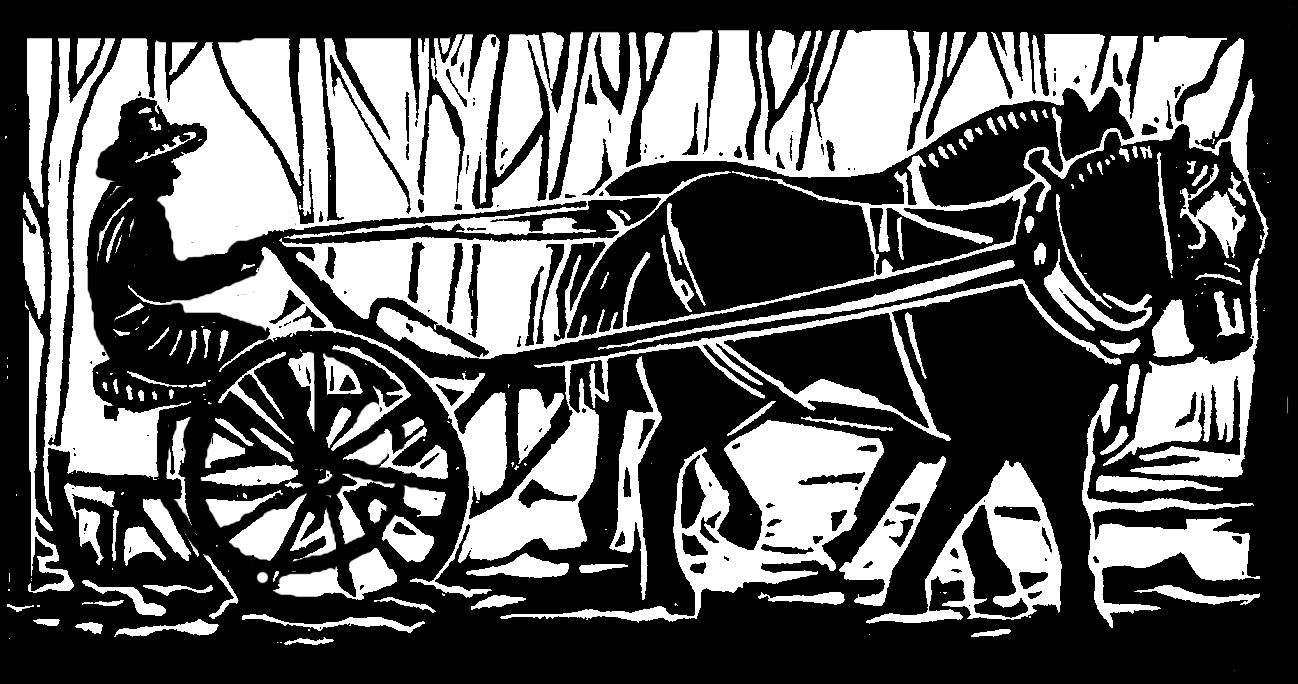There are many wonderful things that could happen on a New Hampshire vegetable farm in May: greenhouses planted and flourishing, hardy spring crops in the fields planted and flourishing, draft horses muscled and flourishing, farmers muscled and flourishing. What a lovely month is May!
There is one spring farm event, however, that it is never, ever wonderful: the dreaded hauling out of the row cover.
Granted we sustainable, organic, biodynamic farmers are very grateful for row cover, which is a thin cloth-like product (i.e., plastic) that keeps bugs and/or frost out, and lets sun and/or rain in to the lucky garden plants. Without row cover, our turnips would be holey, our salad greens would be shredded, our yellow squash and zucchini and cucumbers warped or entirely absent. Without row cover, we could lose our peppers or our eggplant in a cold snap.
Row cover, we recognize, is a marvelous invention. A marvelous, maddening invention. It “floats” over the crops, but in order to float, it needs to be firmly anchored, lest it sail away in the wind. On our farm, we hold down the row cover with rocks. This mostly works well, since we have plenty of rocks. But sometimes a farmer tires of gathering just the right size million rocks and compromises by piling two or three little rocks together and hoping the row cover will stay put. Alas, after a windy night, the farmers have to start all over again, and find the right size million rocks.
Sometimes, too, when the row cover flies off, it catches on a bramble, or the fence, and Rip! A nice big hole for all the little bugs and frost fairies to enter. Or maybe a farmer hasn't quite gotten all those old kale or broocoli or flower stalks out of the garden, and a few lie about, waiting to trap the row cover. Rip! There it goes again.
We find some more rocks to hold the holes together. Or, thanks to one farmer's brilliant idea, we use clothespins to hold the holes together.
At this point every year, the generous, high energy, let's-get-things-done farmer holds his head and says, “We just need new row cover.”
Wielding her clothespins, the thrifty, organized, let's-slow-down-a-little-and-think-about-it farmer disagrees: “We just need to be more careful with the row cover we have.”
This is the annual, or shall we say perennial, row cover row. (The second row, of course, is in its sense of a boisterous disturbance or quarrel, as the American Heritage Dictionary defines it. Typically one of us fellow farmers makes the boisterous disturbance, and the other does the quarreling.)
Part of the row about row cover also has to do with storage. Despite years of other brilliant ideas on the part of the organized farmer about various methods of sorting and labeling (tags on the outside of the bags, writing on the outside and inside of the bags, writing on the row cover itself, sorting into different color bags), a certain let's-get-things-done farmer, weary at the end of a crop and the end of the day, is likely to stuff the row cover into any available bag, ignoring both its label and its color-coded nature, and then toss it into the storage area, to organize properly some other time.
Thus we come around again every year to May, that lovely month! when the unlucky farmer who hauls out the row cover faces the towering heap of unorganized bags.
Is this the bag of really holey 300' row cover saved to warm things up a bit for the early planted spinach? Or is this the bag of only slightly holey, 200' foot row cover that will do well enough for the turnips? Or is this the bag of way too short but perfectly good pieces of row cover that an organized and thrifty farmer couldn't bear to throw away? Or is this the bag of really good, really precious row cover with absolutely no holes that will protect the tender greens? And so on.
There is no way to tell, except by spreading out each length of marvelous, maddening row cover from each bag, one by one, and then stuffing each piece furiously back into the bag when it is not the right one.
“It would save us so much time,” says a certain farmer to another certain farmer, who is striding by with a hoe, looking in the other direction, as if he has no idea what might be transpiring in the row cover world, “if people would put these in the right bags!”
“Actually,” says the other farmer, stopping a moment, “it would save us so much time if people got rid of all this holey junk and bought new row cover!”
When it comes to the row cover row, we the people are both right. Thus we finally, and happily, worked out the Great Row Cover Compromise: every few years we throw out the holiest of the row cover, and invest in some new. Thus we sustain our crops . . . and our fellow-farming relationship.
Originally published in the Monadnock Shopper News, May 10-16, 2017
